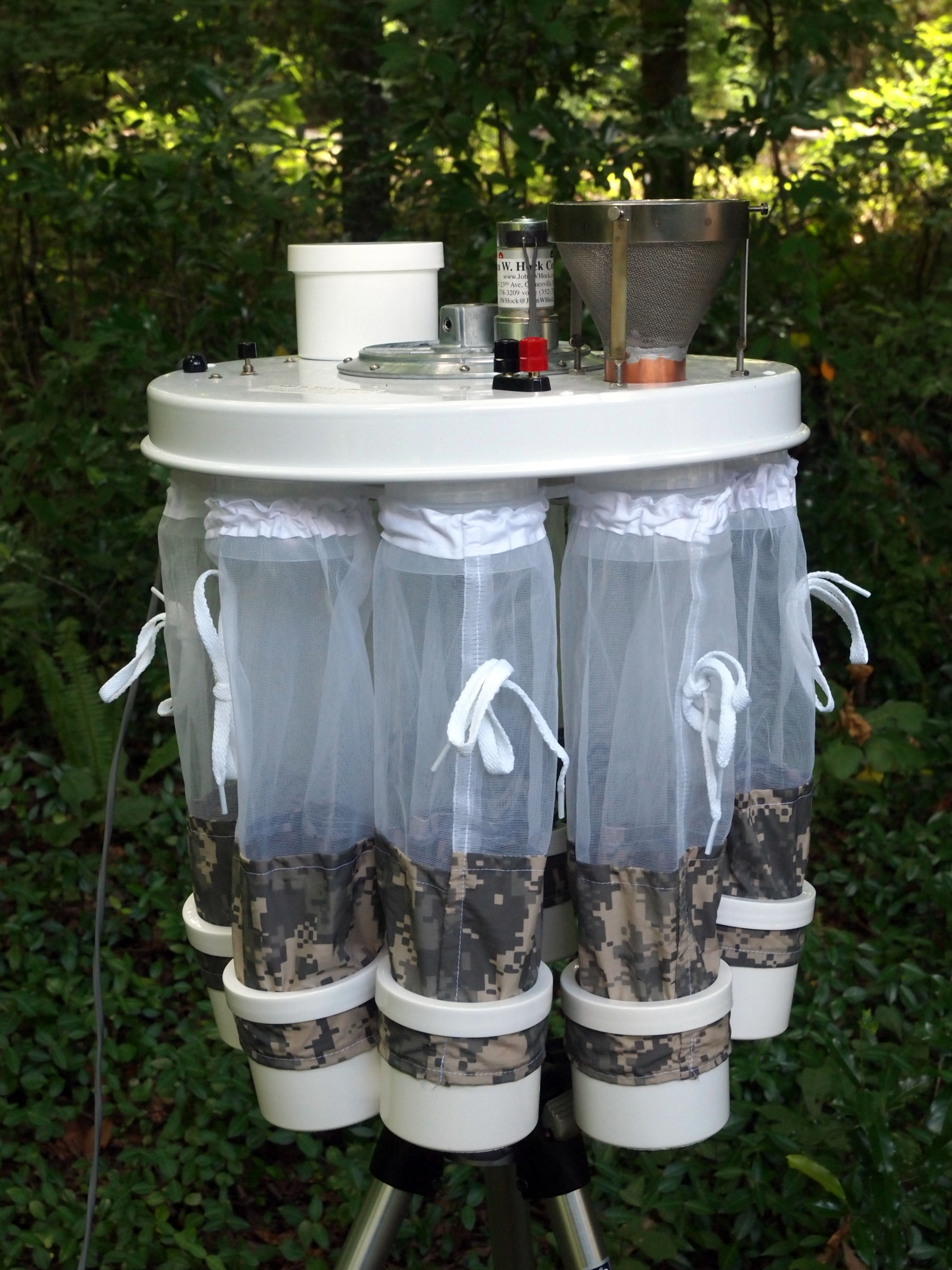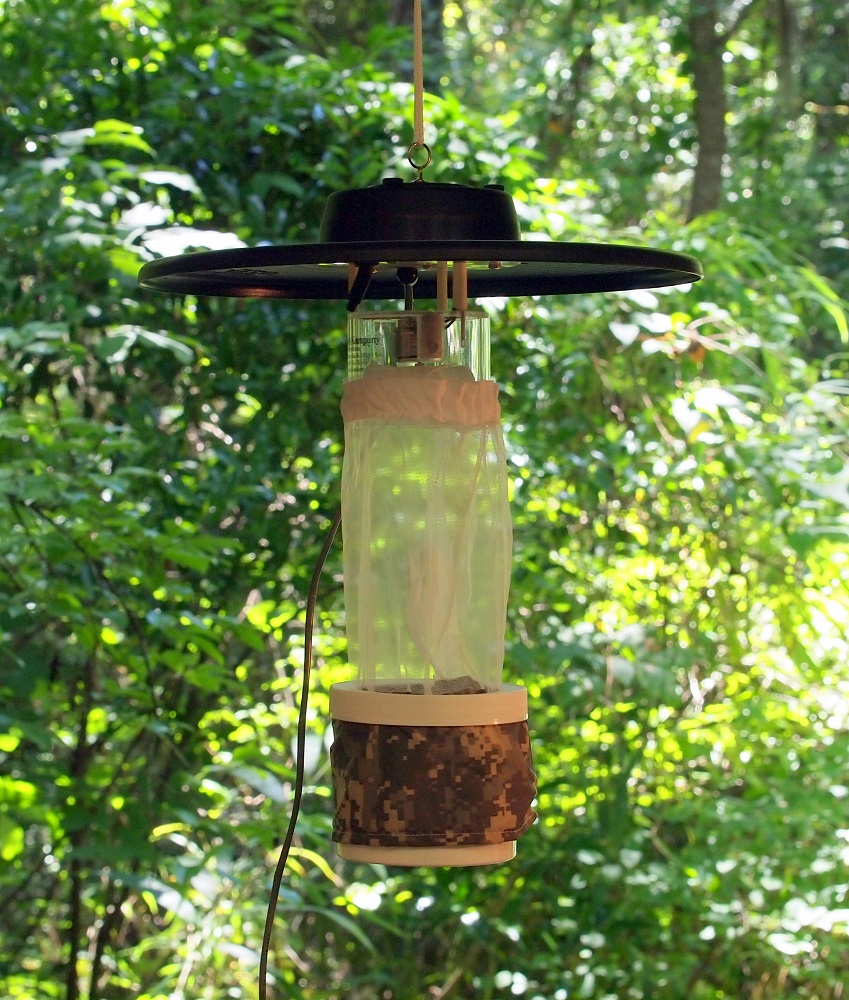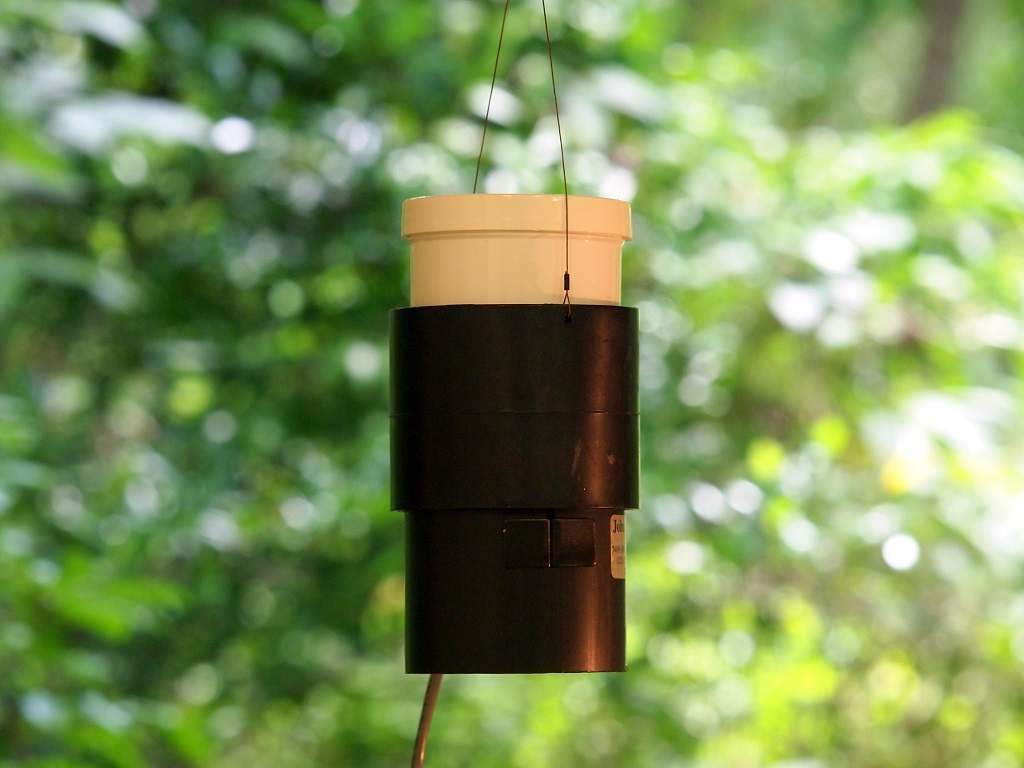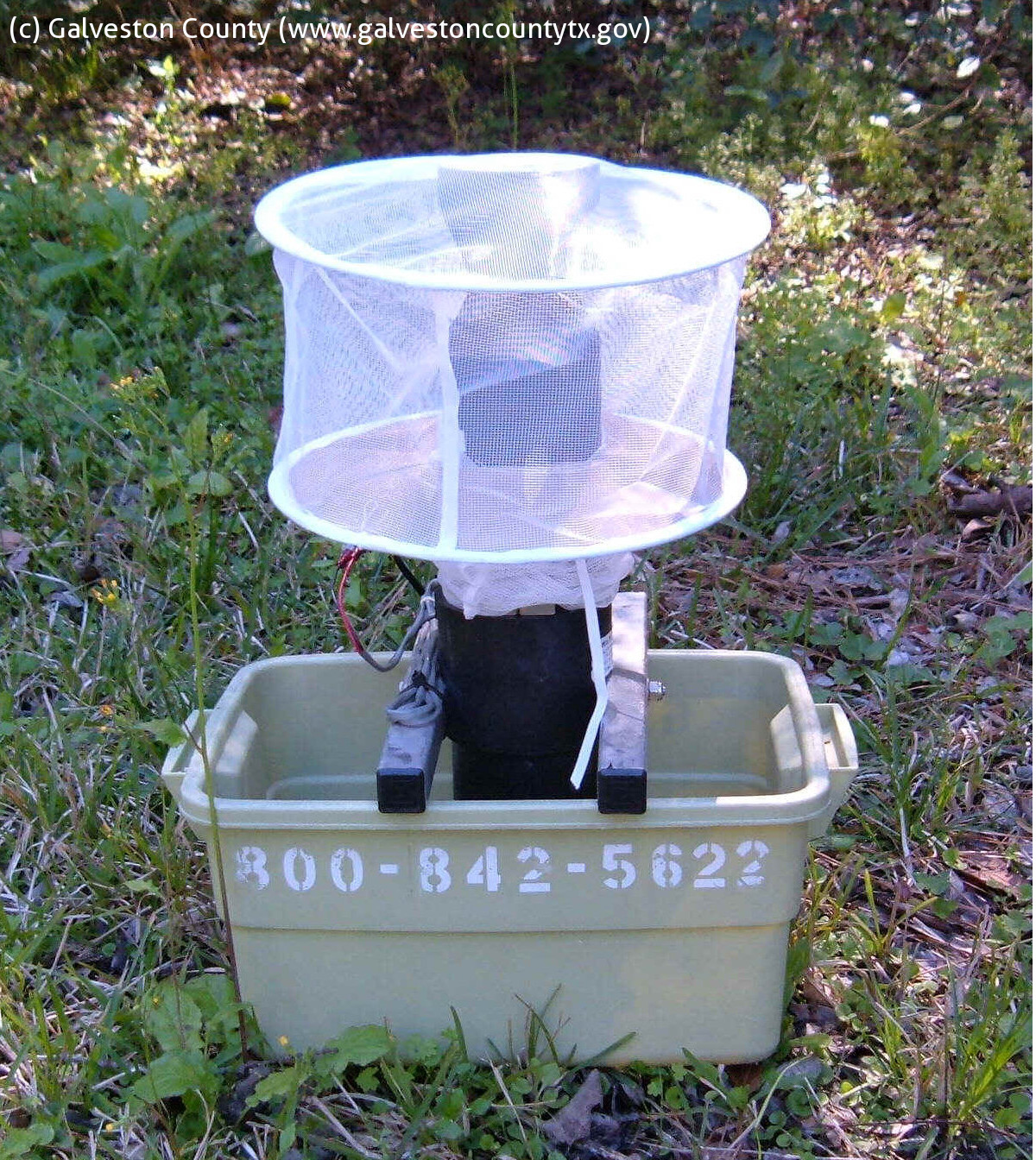The trap was designed for mosquito abatement operations and arbovirus survey purposes. This particular mosquito collection device is meant for a more permanent trap location as it needs to be firmly mounted about 5 to 6 feet above the ground and powered by an outlet.
 Collection Bottle Rotator The John W Hock Company
Collection Bottle Rotator The John W Hock Company
There are two primary functions which the New Jersey Light Trap performs in mosquito surveillance programs.

New jersey light trap mosquito. The New Jersey Light Trap Mulhern 1942 provided the mosquito control community with a mechanical device capable of sampling host seeking mosquitoes. Gravid traps use the stink water a yeasty. The New Jersey Stainless Steel Light Trap Model 1112 has been a long time standard for mosquito control operations.
And dependence on a 110-volt battery limited its usefulness in the wild. Trap development goes back to the early 1900s when the first rather unsuccessful trapping attempts were made using bright light as an attractant and giant fans for capture. The large stainless steel trap is usually permanently mounted and is available with an optional PhotoSwitch and Programmable Seven-day Timer.
New Jersey Stainless Steel Light Trap. It was developed in 1927 at the New Jersey Agricultural Experiment Station and consists of an incandescent bulb and a fan that blows the mosquitoes into a jar where they are killed by the vapor of a dichlorvos treated strip. Mosquitoesthat posi-tively phototactic however poorly repre-sented in light trap collections Huffaker and Black 1943 Service 1976.
1966 buthelps provide picture ofmosquito pest problems. Quadrimaculatus in New Jersey light traps in Acadia Parish in 1984 were correlated with cattle density within 08 km of the trap R2 97 68 and 74 respectively. Airman 1st Class Jacqueline Douglas 87th AMDS Public Health Flight technician prepares a Gravid trap Aug.
New Jersey light traps are a well-established means of monitoring mosquitoes with both advantages and disadvantages. The hypotheses were not supported. CO2 trap counts 1994 avg.
There is a long history of light trap use in measuring the effectiveness of mosquito control in populated areas. Columbiae Anopheles crucians and An. We have attempted to produce an efficient convenient and durable trap through the use of the highest quality materials available and thoughtful design.
The trap count numbers listed below represent only one 1 of the factors considered in determining the Adulticiding Factor Analysis AFA Level. Studies have indi-cated thatthe presence ofdryice onlyin-trapcollectionsNewhouse al. In this segment Contra Costa Mosquito Vector Control District inspector Josefa Cabada explains the significance of using special traps to collect mosquitoes.
Brown Timberland High School. The results indicated that the New Jersey Light Trap most efficiently attracted and collected mosquitoes. Annual captures of Ps.
Cattle are the primary host for the major pest mosquito Psorophora columbiae in the rice production region of the Gulf-south. Photo Details Download. Uses of the New Jersey Light Trap.
The dry ice will be used in a New Jersey Light Trap because female mosquitoes are attracted to carbon dioxide. There has been a vast amount of research on the ability of different types of light traps to capture mosquitoes 9 26-28. One of the original mosquito survey traps developed in response to disease outbreaks in the 1930s the New Jersey light trap remains among the most productive and efficient traps available.
19 2013 at Joint Base McGuire-Dix-Lakehurst NJ. Of the 1 571 females taken 703 per cent were caught biting and 297 per cent in the trap. All traps 0 05 1 15 2 25 0 100 200 300 400 500.
The standard for years was the New Jersey light trap developed in 1932 but its weight of 15 lbs. One is to provide a historical record of mosquito abundance and species presence in an area. Headlee and Mulhern pursued the concept of combining light with suction and developed the first standard mosquito collection device to serve as an alternative for human landing collections.
Currently the most popular of the developed traps the CDC. The New Jersey Light Trap 1942. The New Jersey light trap is a generalized adult mosquito trap that is designed to capture a broad spectrum of mosquito species.
On 19 nights between 6th July and 10th November hand collections were made and a trap operated over the same periods of time and in the same places. A comparison of the results shows that an average of three less mosquitos was taken in the trap. Historical data show fluctuations on a year to year basis as well as fluctuations over the span of one season.
Also the Aedes aegypti mosquito was least commonly found while the Culex resturan was most commonly found. Culicidaeprevention control Malariaprevention control Mosquito Control New Jersey. Invention of the New Jersey light trap many mosquito traps have been developed and tested for mosquito surveillance 26 27.
Adulticiding Factor Analysis AFA and Nuisance Mosquito Trap Counts New Jersey Light Traps Please refer to the Adult Mosquito Control Policy which includes the Adulticiding Factor Analysis AFA Guidelines for more details. 18908074 PubMed – indexed for MEDLINE MeSH Terms. It indicates the species and relative abundance of mosquito populations and helps formulate hatch predictions.
For 45 nights during July and August 1944 the author exposed himself to the bites of mosquitos for 30 minutes beginning at dusk and a New Jersey light-trap RAE B 31 195 etc with a 25-watt white-frosted bulb was operated throughout the night 82 ft. The separation of mosquito catches from the New Jersey light trap. Comparison of New Jersey Light Traps and EVS Traps for Surveillance of Culex tarsalis populations Steven Schutz Contra Costa Mosquito Vector Control District 155 Mason Circle Concord CA Contra Costa Mosquito Vector Control.
The CDC Trap was least effective. Mosquito control personnel in the State of New Jersey. During the summer and autumn of 1932 a light-trap for mosquitos such as is used in New Jersey RAE B 20 241 was tested at Oreando Florida.
GIES RW BROWN WL Jr. NewJersey light trap for gathering mosquito population data. The trap was designed with the hope of maximizing adult surveillance results and minimizing human labor and bias.
 New Jersey Light Traps San Mateo County Mosquito And Vector Control District
New Jersey Light Traps San Mateo County Mosquito And Vector Control District
 Setting Up A Municipal Mosquito Control Program Mississippi State University Extension Service
Setting Up A Municipal Mosquito Control Program Mississippi State University Extension Service
 Usb Photocatalytic Mosquito Killer Lamp Insect Trap Lighting Repellent Sale Price Reviews Gearbest
Usb Photocatalytic Mosquito Killer Lamp Insect Trap Lighting Repellent Sale Price Reviews Gearbest
 Pin On Housekeeping Organization
Pin On Housekeeping Organization
Plymouth County Mosquito Control Project Diseases
 Cdc Updraft Blacklight Uv Trap The John W Hock Company
Cdc Updraft Blacklight Uv Trap The John W Hock Company
 New Standard Miniature Light Trap With Co2 The John W Hock Company
New Standard Miniature Light Trap With Co2 The John W Hock Company
 Cdc Wilton Trap The John W Hock Company
Cdc Wilton Trap The John W Hock Company
 Dynatrap 1 Acre Insect And Mosquito Trap Mosquito Trap Mosquito Misquito Trap
Dynatrap 1 Acre Insect And Mosquito Trap Mosquito Trap Mosquito Misquito Trap





